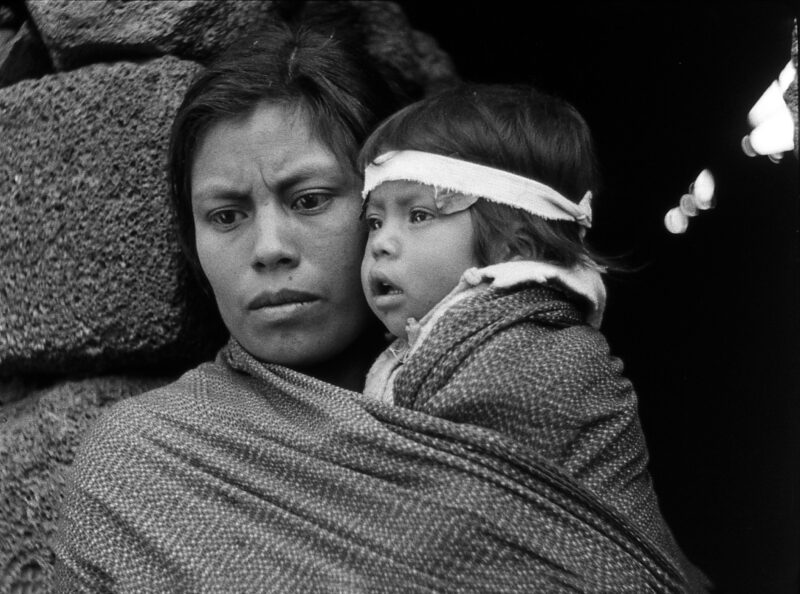
In the coming months, Sag Harbor Cinema will highlight the importance of Sag Harbor resident John Steinbeck’s work and the community effort to preserve his historic Bluff Point home with a series of screenings, including both adaptations from Steinbeck’s novels, as well as films scripted by Steinbeck, and a Projections panel.
The program will start on Sunday, May 1, at 6 p.m. with a rare 35mm showing of “The Forgotten Village” (1941), a documentary that Steinbeck wrote for director Herbert Kline that was shot in the Mexican states of Puebla and Tlaxcala with a non-professional cast of mostly indigenous residents of the region. Spencer Tracy was initially asked to voice Steinbeck’s narration, but since MGM wouldn’t let him out of his contract, he was replaced by Burgess Meredith.
The screening of “The Forgotten Village” will be preceded at 4 p.m. by a “Projections” panel moderated by Steve Hamilton, the co-founder of Bay Street Theater. Participants will include Bret Johnston, Director of the Michener Center for Writers at the University of Texas in Austin; Tommy John Schiavoni, who is a Councilperson for the Town of Southampton; and Kathryn Szoka of Canio’s Cultural Cafe, sponsor of the “Steinbeck in Search of America” initiative.
“Projections” will focus on Steinbeck’s work and will illustrate the aims of the campaign to preserve his home in Sag Harbor and turn it into a world class writing center. The Sag Harbor Partnership is a co-sponsor of this panel discussion.
This is the third event of Sag Harbor Cinema’s “Projections” series, an initiative that aims to activate the Cinema’s Rosenberg Workspace through collaborations with regional not-for-profit groups in order to amplify voices, begin conversations, and build audiences through the Cinema’s network and digital presence. “Projections” was created by Sag Harbor Cinema’s Education Committee Chair, Bill Collage.
Upcoming titles of the film program, running through the summer and fall at Sag Harbor Cinema will include: “The Moon Is Down” (1943) on May 25th; “East of Eden”(1955); “Grapes of Wrath” (1940); “Viva Zapata!” (1952) and “The Pearl” (1947). Future dates and showtimes will be announced and listed on the Cinema’s website.
Tickets for “Projections” at 4 p.m. are free, but due to limited seating, must be reserved at sagharborcinema.org. Tickets for “The Forgotten Village” and other film screenings are separate and can be purchased at sagharborcinema.org. Sag Harbor Cinema is at 90 Main Street, Sag Harbor.
“The Forgotten Village”
Dir. Herbert Kline
USA, 1941; 67 mins, in English
Not Rated
His first work written for the screen and his only screen documentary (actually more of a docudrama told in the form of a parable), Steinbeck became involved in the project when friends introduced him to Herbert Kline, a distinguished young director who had recently directed four anti-fascist documentaries. In the film, an indigenous couple lives with their six children in the small and remote pueblo of Santiago, somewhere on the central plateau of Mexico. The film focuses on their oldest son, Juan Diego, who attempts to bridge two very different worlds, one traditional and one modern. Through an idealistic young teacher at the government school in his village, Juan Diego is introduced to modern science. As an outbreak of a mysterious disease begins to affect his family and the village around him, Juan Diego struggles to overcome ancient superstitions and tries to save his small community from suffering and death.
Preservation from the original 35mm nitrate picture and soundtrack negatives from the Stanford Theatre Foundation Collection and a 35mm nitrate fine grain master positive from MOMA. Laboratory services by The Stanford Theatre Film Laboratory, Film Technology Company, Inc., DJ Audio, Inc. and Audio Mechanics. Print courtesy of UCLA Film Archive.